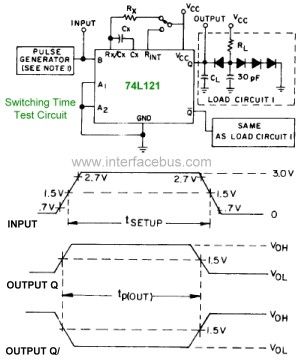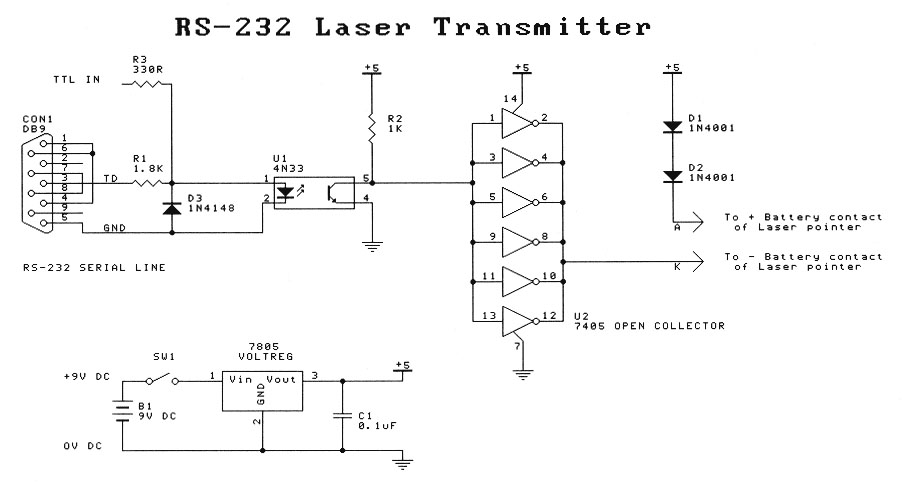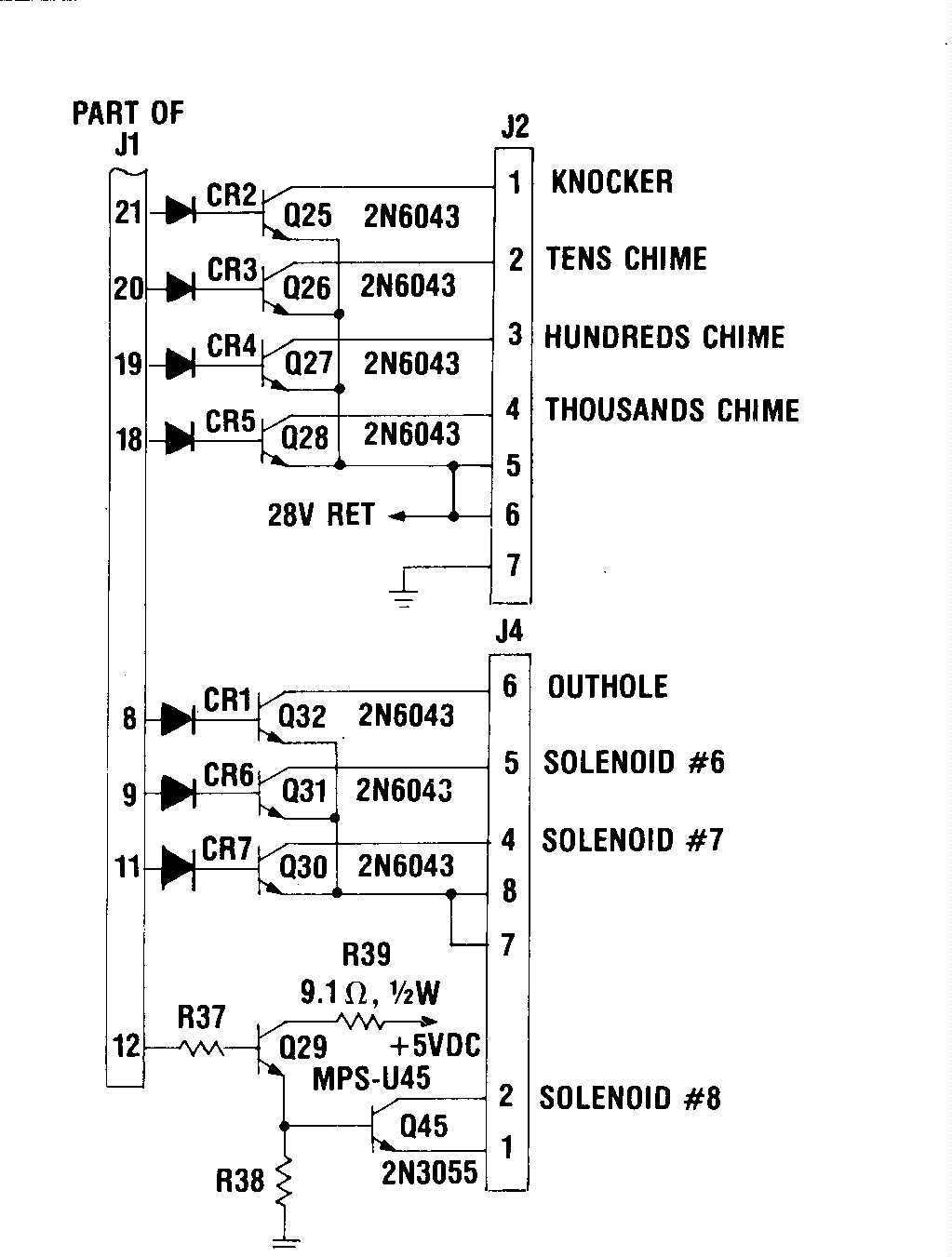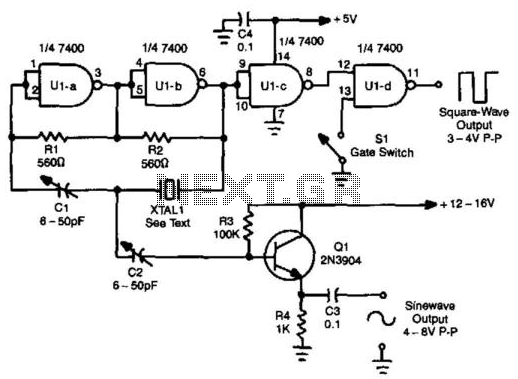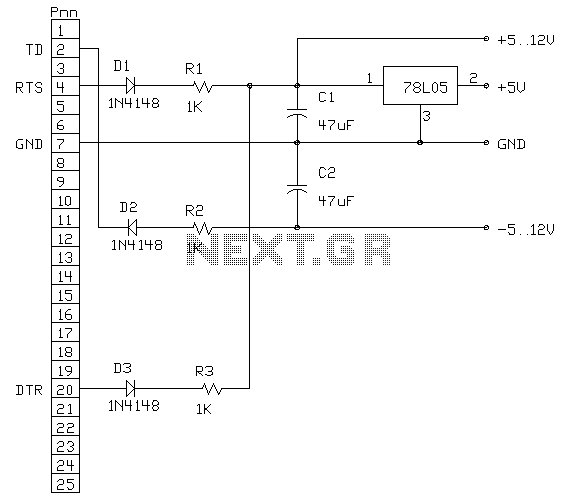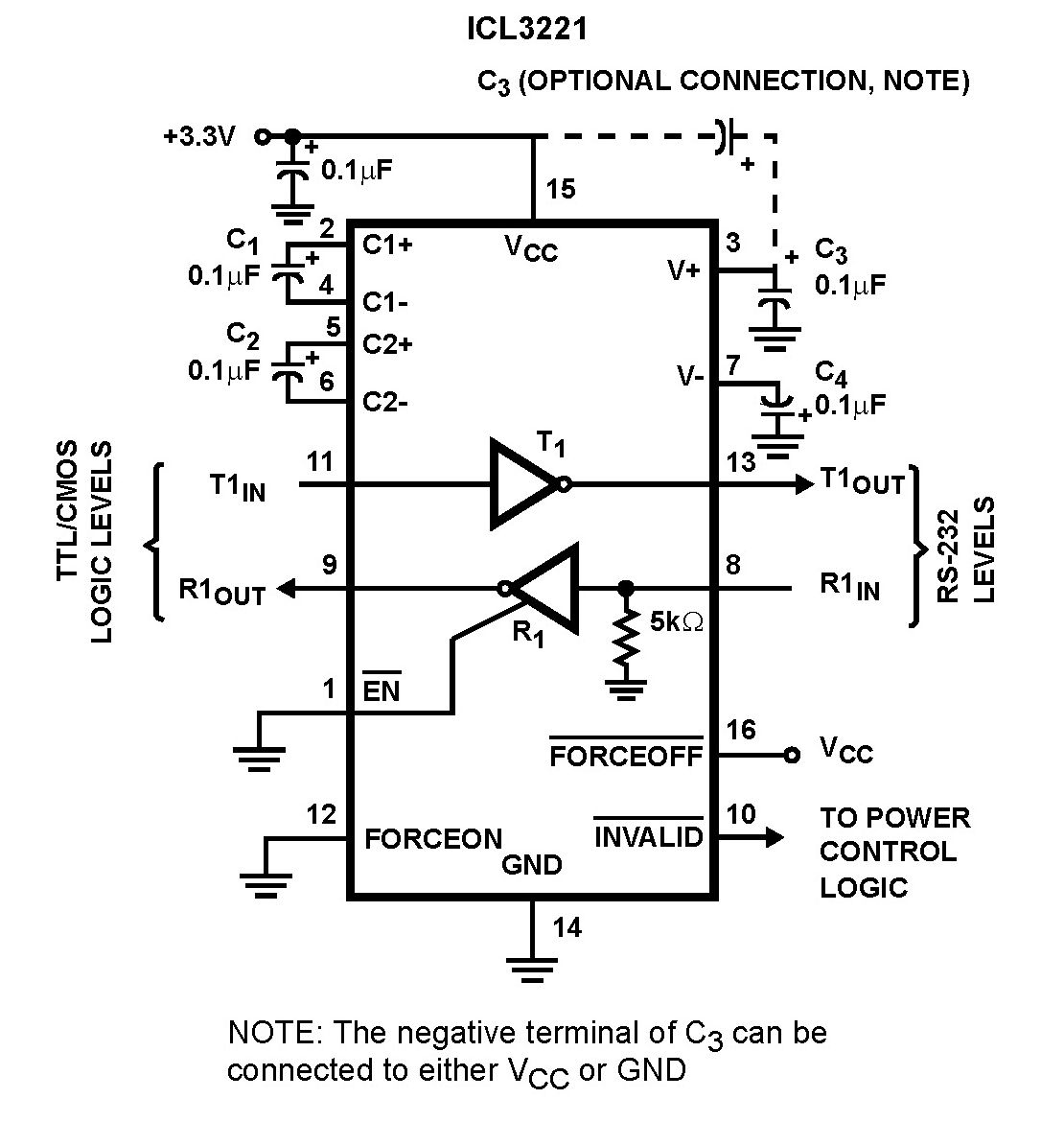
RS-232 to TTL cable with MAX232
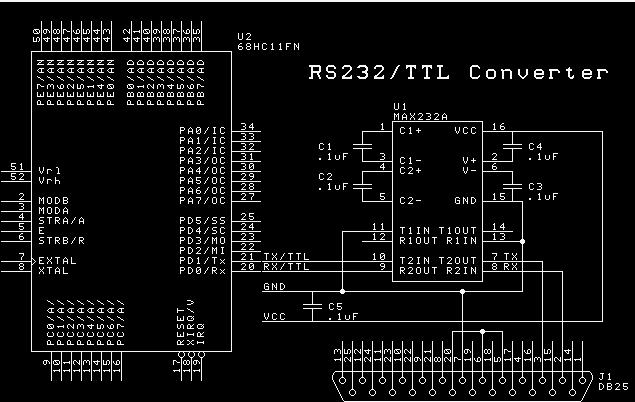
Here is a diagram of the internals of the MAX232A. It shows a double charge pump voltage doubler and a +10v to -10v voltage inverter. The voltages output are used to generate the RS-232 compliant signals. The MAX232A has provisions for two serial ports on the same physical package. Most people only connect one of them. You can get a data sheet for the MAX232 and friends from Maxim.
The MAX232A is an integrated circuit specifically designed to facilitate the conversion of TTL (Transistor-Transistor Logic) levels to RS-232 levels, which are necessary for serial communication. The internal architecture of the MAX232A includes a double charge pump voltage doubler, which generates the necessary negative voltage from a single positive supply voltage, typically +5V. This is crucial for creating the RS-232 voltage levels, which range from +3V to +25V for a logical '1' and -3V to -25V for a logical '0'.
The voltage inverter within the MAX232A is engineered to generate both +10V and -10V outputs, ensuring that the device can produce the required signal levels for RS-232 communication. The charge pump operates by using capacitors to store and transfer charge, effectively doubling the input voltage and inverting it to create the negative voltage required for the RS-232 standard.
The MAX232A can support two separate serial ports, allowing for versatile applications in various electronic systems. However, it is common for users to connect only one port in many designs, which simplifies the circuit and reduces component count. The device is widely utilized in applications where serial communication is necessary, such as in microcontroller interfacing, data acquisition systems, and robotics.
For engineers and designers, the MAX232A offers a compact solution with minimal external components required, making it an efficient choice for implementing serial communication capabilities in embedded systems. The comprehensive data sheet provided by Maxim for the MAX232 and its variants includes detailed specifications, typical application circuits, and performance characteristics, serving as a valuable resource for design and implementation.Here is a diagram of the internals of the MAX232A. It shows a double charge pump voltage doubler and a +10v to -10v voltage inverter. The voltages output are used to generate the RS-232 compliant signals. The MAX232A has provisions for two serial ports on the same physical package. Most people only connect one of them. You can get a data sheet for the MAX232 and friends from Maxim. There are two camps on how to implement serial ports on a robot. One says stick the MAX232 on the robot. The other says don't. I kind of like the don't category! Most of my robots are autonomous, so I don't really need the MAX232 onboard consuming power. 🔗 External reference
The MAX232A is an integrated circuit specifically designed to facilitate the conversion of TTL (Transistor-Transistor Logic) levels to RS-232 levels, which are necessary for serial communication. The internal architecture of the MAX232A includes a double charge pump voltage doubler, which generates the necessary negative voltage from a single positive supply voltage, typically +5V. This is crucial for creating the RS-232 voltage levels, which range from +3V to +25V for a logical '1' and -3V to -25V for a logical '0'.
The voltage inverter within the MAX232A is engineered to generate both +10V and -10V outputs, ensuring that the device can produce the required signal levels for RS-232 communication. The charge pump operates by using capacitors to store and transfer charge, effectively doubling the input voltage and inverting it to create the negative voltage required for the RS-232 standard.
The MAX232A can support two separate serial ports, allowing for versatile applications in various electronic systems. However, it is common for users to connect only one port in many designs, which simplifies the circuit and reduces component count. The device is widely utilized in applications where serial communication is necessary, such as in microcontroller interfacing, data acquisition systems, and robotics.
For engineers and designers, the MAX232A offers a compact solution with minimal external components required, making it an efficient choice for implementing serial communication capabilities in embedded systems. The comprehensive data sheet provided by Maxim for the MAX232 and its variants includes detailed specifications, typical application circuits, and performance characteristics, serving as a valuable resource for design and implementation.Here is a diagram of the internals of the MAX232A. It shows a double charge pump voltage doubler and a +10v to -10v voltage inverter. The voltages output are used to generate the RS-232 compliant signals. The MAX232A has provisions for two serial ports on the same physical package. Most people only connect one of them. You can get a data sheet for the MAX232 and friends from Maxim. There are two camps on how to implement serial ports on a robot. One says stick the MAX232 on the robot. The other says don't. I kind of like the don't category! Most of my robots are autonomous, so I don't really need the MAX232 onboard consuming power. 🔗 External reference
